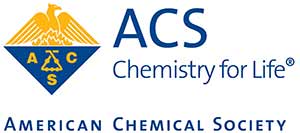Papers

Conductance behavior of Sodium, Potassium and Rubedium chlorides and Potassium bromide and iodide in 10%(W/W) 2-(ethoxy) ethanol – water mixture has been studied at 30o , 35o and 40oC. The equivalent conductance data have been analysed by making use of Fuoss-Kraus, Shedlovsky and Fuoss(1980) conductance equations to evaluate 0 and KA . There is a reasonable agreement between
0 and KA values obtained by Fuoss-Kraus and Sehdlovsky extrapolation techniques. But the values obtained by Fuoss (1980) equation are greater. An attempt is made to split
0 values of different electrolytes into ionic contribution. Different theories of ion-pair formation have been applied in order to evaluate the distance of closest approach. It is observed that all the theories exhibit their inability to predict the exact ion-association process. Walden products(
0
0)are calculated to understand the solvation behavior.

Gliclazide, N-(4-Methyl Benzene Sulphonyl)-N-(3-azo bicycle (3,3,0-Oct-3-yl) urea trade name Diamicron, an oral hypoglycemic agent was used to synthesize its complex with Ag(I). The hypoglycemic activity of gliclazide was observed on experimental animals (dogs) and then compared with Ag Complex, using Folin-Wu method. Results reveals that the gliclazide Ag-Complex is more effective than that of parent drug.This blood sugar lowering effect of sulfonylureas seems to be related to the stimulation of insulin secretion. On the other hand many studies have strongly indicated the presence of long term or extra pancreatic action of sulfonylureas. The interesting observation on metal complex of oral sulfonylurea used as anti-diabetic agent for lowering blood sugar concentration may likely substantiates the use of these complex after extensive clinical studies.

Several pre-concentration and separation techniques are known, as well as the cloud point extraction (CPE). In order to optimize the operation of a coacervate extraction process, it is extremely important to take into account, on the one hand, the choice of the surfactant, which must be the most efficient and, on the other hand; and to know well the evolution of the factors that governs the effectiveness of this technique.
Investigations on the extraction of cupric ions by Triton X-100, the ionic liquid denoted LIM and the potassium nitrate (KNO3) were produced using the technique of extraction by cloud point (coacervat). The extraction experiments showed that the cupric ions were extracted with the following optimal parameters: pH 2.0; Concentration of LIM equal to 0.08M; Triton X-100 mass ratio equal to 0.1%; KNO3 mass ratio equal to 1%; at ambient temperature.


This work is licensed under a Creative Commons Attribution-NonCommercial-ShareAlike 4.0 International License











